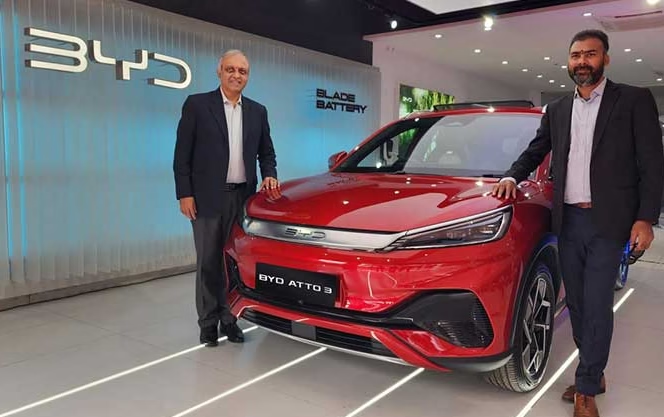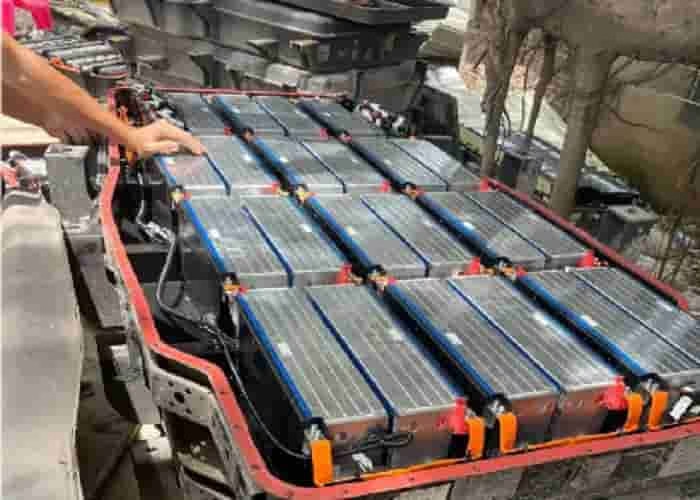As the number of new energy vehicles reaches 31.4 million, relevant data show that more than 3.5 million new energy vehicles will “go out” of the warranty period in 2025. This huge number of “out of warranty” (out of the original factory warranty) means that the demand for three-electric components in the independent after-sales market of new energy vehicles will show a blowout growth. Recently, an institutional report pointed out that the after-sales of new energy vehicles has now formed a market space of hundreds of billions of yuan, but the after-sales maintenance costs of new energy vehicles are relatively high, the coverage of authorized service outlets is relatively insufficient, and the maintenance and detection capabilities of the three-electric system are limited. These problems are all important pain points that affect consumers’ use experience.
Among the complaints about new energy vehicles in 2024, the “three-electric” (battery, motor, and electronic control system) accounted for the highest proportion. The price difference of replacing batteries in 4S stores is nearly 10,000 yuan, and the high-voltage maintenance queues last for weeks; the maintenance market will reach 300 billion yuan in 2025, but the gap in professional technicians exceeds 80%… The difficulty and high price of new energy vehicle maintenance have become the pain points of the industry development.
The technology and accessories form their own system, and it is difficult for third-party auto repair shops to repair them.
A person in charge of an auto repair shop who has been in the industry for 30 years told reporters that it is difficult for third-party auto repair shops that are independent of the main factory and authorized stores to repair new energy vehicles. Because the design and use of core components such as the car system and three-electric systems of new energy vehicle brands are relatively independent, it is difficult to find universal standard parts in the secondary market; in addition, the current technology and related training for new energy brand repairs are basically self-contained by the main factory, and it is difficult for the outside world to obtain relevant data and technology.
The reporter’s investigation found that compared with the relatively mature fuel vehicle repair market, the repair of new energy vehicles is mainly based on brand authorized dealers and main factory direct stores, but it is not enough to support the growing demand for new energy vehicle repairs. According to statistics from the China Automobile Repair Industry Association, there are about 400,000 companies related to fuel vehicle repair and maintenance in my country, but there are only 20,000 to 30,000 new energy vehicle repair companies.
According to data revealed by experts at the 9th Automobile Service Chain Development Forum, the number of new energy vehicles in my country is expected to exceed 50 million by 2025. At the same time, the number of new energy vehicles “out of warranty” will also increase from 1.36 million in 2024 to 3.5 million in 2025. According to data provided by Zhang Yanhua, president of the China Automobile Maintenance Industry Association, there are currently less than 100,000 people engaged in new energy auto repair in China.
The industry pointed out that the high threshold and high investment of new energy vehicle maintenance, especially the closed nature of the maintenance and inspection of the three-electric system, have restricted the expansion of the scale of third-party after-sales service stores to a certain extent.
Once the after-sales store finds unofficial authorized maintenance records, it will refuse to insure
Mr. Liu, who has used 3 pure electric vehicles, said from his own experience that if the “three-electric” encounters problems after the warranty period, he can only go back to the original brand’s after-sales store. At the same time, the after-sales store will require the owner to provide the maintenance records of the brand store. Once unofficial authorized abnormal use or maintenance records are found, the insurance will be refused. Mr. Liu hopes that manufacturers can separate after-sales service from 4S stores, so that car owners can have lower prices and more choices.
The reporter’s investigation also found that many new energy vehicles that have entered the second-hand car market are also facing the problem of difficult maintenance. Liang Guang, a second-hand car dealer, told reporters that most new energy vehicle brands on the market provide lifetime warranty for the “three electrics” for the first owner. Once the vehicle is traded as a second-hand car, it will lose the “first owner’s rights and interests.” “Once there is a problem with the battery or motor, the repair price will be higher.”
There is no unified testing and evaluation standard for the “three electrics” for the time being, and the brand has the final say on the repair price
At present, there is no mature and unified testing and evaluation standard for the “three electrics” of new energy vehicles nationwide. This also leads to the brand having the final say on the repair price of the “three electrics”.
According to a report by Cinda Securities, by 2025, the size of the passenger car after-sales market will reach nearly 2 trillion yuan, of which nearly 15% of the value (about 300 billion yuan) comes from the after-sales maintenance of new energy vehicles.
The “visible hand” is also issuing relevant policies and measures to guide the standardized development of the market. In January this year, four departments issued guiding opinions, clearly stating that they would enrich the supply channels and types of new energy vehicle maintenance parts, encourage and promote new energy vehicle companies and power battery companies to improve the maintenance economy of power batteries through technology opening, and support their self-operated or authorized networks to sell “three-electric system” accessories to the public.
The reporter noticed that recently, companies and platforms engaged in new energy third-party testing services have continued to emerge, and some platforms have built a full life cycle service system covering new energy vehicle transactions, aftermarkets, finance and supervision by integrating data from multiple departments, which may bring benefits to the independent maintenance of a large number of “out-of-warranty” new energy vehicles.
Break the “information island” as soon as possible
Realize the sharing of OEM data
What is the core problem of breaking the vicious circle of new energy vehicle aftermarket development? Some industry insiders also pointed out that new energy vehicles have natural Internet attributes, such as basic usage habits such as mileage, speed and time, battery charge and discharge times, etc., which can be synchronized to the Internet through the car platform, and then saved and used through big data technology. Based on this information, it is possible to calculate the remaining life of the vehicle’s “three-electric” and even the second-hand residual value.
The premise of breaking the “information island” is to enable new energy vehicle OEMs to share data. Therefore, only when participants in all links work together and eliminate various constraints and restrictions can we promote the steady development of new energy vehicles and achieve their own high-quality development.
New energy vehicles, who can advance to the final round?
In the first quarter of this year, NIO delivered 42,000 vehicles, a year-on-year increase of 4.1%. This includes 27,000 NIO brand vehicles and 14,700 Ledao brand vehicles, with an average vehicle price of 236,000 yuan per vehicle. However, in comparison, Ideal and Xiaopeng delivered more than 90,000 vehicles in the first quarter, with average vehicle prices of 266,000 yuan and 153,000 yuan respectively.
Although Xiaopeng lost 660 million yuan in a single quarter, it is not far from the break-even point; although Ideal’s net profit fell sharply, it still had a net profit of 647 million yuan.
Later entrant Xiaomi Motors sold 75,000 vehicles in the first quarter, with an average vehicle price of 238,000 yuan, and the loss in a single quarter narrowed to 500 million yuan. At present, the losses of peers have been further narrowed.
















Leave a Reply